
After an exciting Day 1 and Day 2 at INTEGRATE 2022, the stage was perfectly set for the last day of the event.
Before you proceed further, we recommend you take a read at the following links – Day 1, Day 2.
Stephen W Thomas, one of the speakers of Integrate started the session “Getting started migrating from BizTalk to Azure” with a short introduction about himself.
Stephen explained his current project related to migration from BizTalk server 2013 to Azure. His primary goal is to shut down the BizTalk environment. This session is based on two secrets related to BizTalk migration. Let’s see:
Most Azure experts are usually not interested in learning BizTalk, but BizTalk experts are usually excited to learn Azure.
There are a few kinds of stuff that are supported by BizTalk
There are a few kinds of stuff that are supported by Azure
Stephen shared some resources which you can get started with:
You can lower or remove upgrade and software assurance costs. More security is provided and you can also reduce or remove on-premises resources. Further he explained some of the architecture scenarios.
The session ended with exciting questions and answers.
Mattias presented the session on Long-lasting build and release for Integration focusing on the integration developers. Integration developers, build more services than any other team and they also want to have as little maintenance as possible. This could mean it takes years before they come back and revisit something they built. At that time, they really want to have that deep understanding and confidence to make the change swiftly without spending a lot of investigation.
Mattias started the session by giving a glimpse of how his life started as a consultant and his experience in providing build and release for different organizations. He also threw light on the support required for organizations during a long-lasting build and explained the efforts and parameters involved in it. This session primarily focused on integration developers encouraging them to develop along with lasting build and release setup.

The session was a full-fledged demo presentation. To make the session more interesting Mattias created a live environment. He explained the working principle of each component involved in it and its role in the architecture. The demo session was complete coverage of the build, testing, and execution of a real-time infrastructure with a long life.

Mattias concluded the session with an overview of Managed Identities and a few resources on how to achieve an efficient build and release for integration.
Our Founder and CEO, Saravana Kumar, briefly introduced Document360 and its features to the attendees at INTEGRATE 2022. Saravana explained how Kovai.co has been using Document360 internally, and how other companies can take advantage of it. He remarked how the company is literally being run using Microsoft Teams and Document360.
While sharing Kovai.co’s homepage on Document360, where knowledge bases of our various products—including Biztalk360, Serverless360, Document360, Atomic Scope, and Cerebrata, he chose to display Biztalk’s knowledge base page.
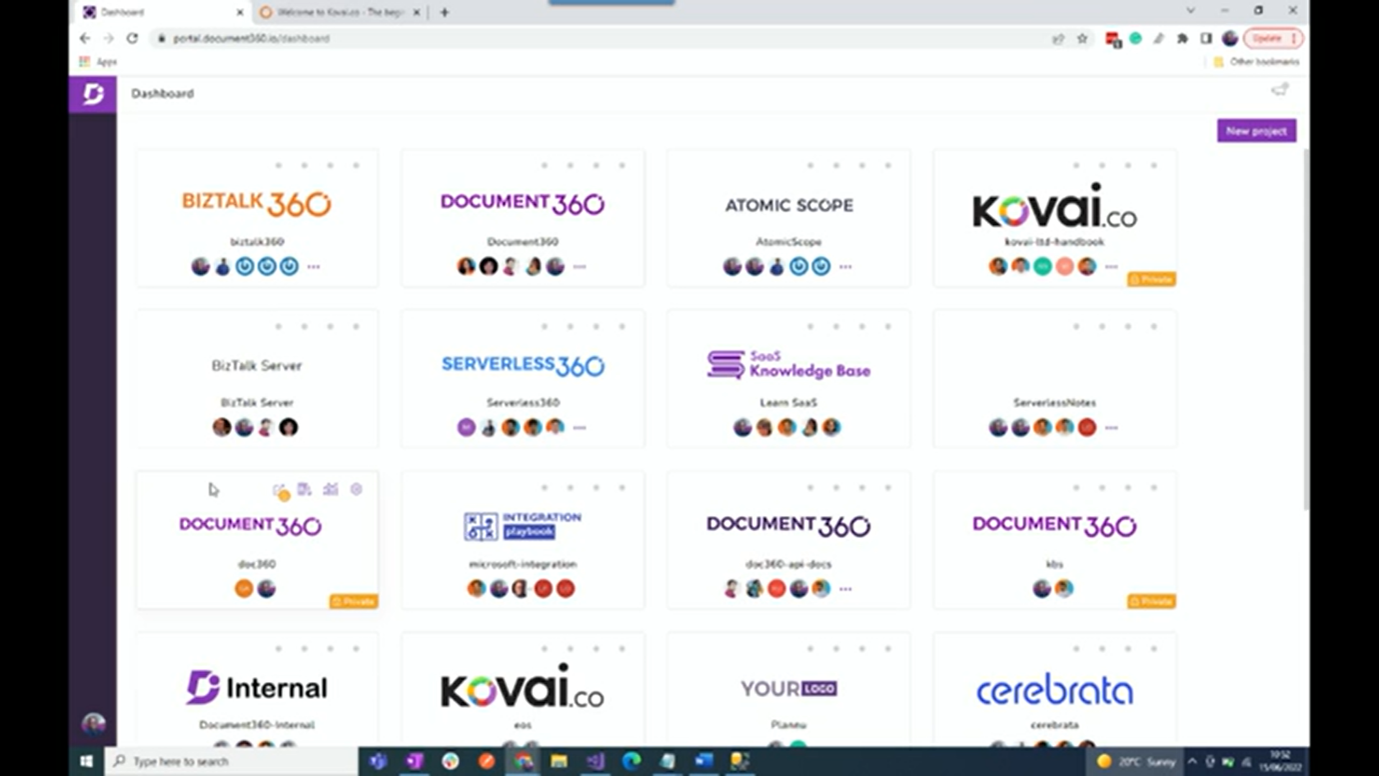

Kovai.co has been using Document360 for all their product documentation requirements. The product has an intuitive search engine, that enables easy retrieval of relevant articles. Granular level access can be implemented in the system, where you classify sections for private or public access with additional controls.

Recalling how most enterprise companies earlier managed knowledge bases on Word docs or OneNote, where it would often get overcrowded and information may even get lost. This was especially hard when multiple teams had to collaborate on a document.
Document360 solves most of these issues, as every document is maintained within an internal platform. The workspace has a tab ‘versions’—where editing history and editor details can be viewed. It also has an extensive security mechanism that detects all the security gaps within your knowledge base.
The knowledge base created using Document360 helps streamline the entire documentation process by creating documents for organizational silos. “The product was born out of our own frustration of not finding the right documentation tool in the market for software documentation. Document360 is easy to use, allowing you to create a new category title or an article.
Recently, Document360 introduced the freemium model allowing users to try the product. The paid subscription starts as low as $99.
Dan Toomey, Microsoft Azure MVP started the session by answering one of the most commonly asked questions “Why transformation?”

Azure Logic Apps, Functions, API Management, Event Grid, Service Bus, and Data Factory are the main Azure Integration Services. Still, among these, he mentions that only 4 services can help you perform the transformation.
The rest of his talk focuses on 6 different scenarios involving the Azure integration Services that are highlighted in the below image.
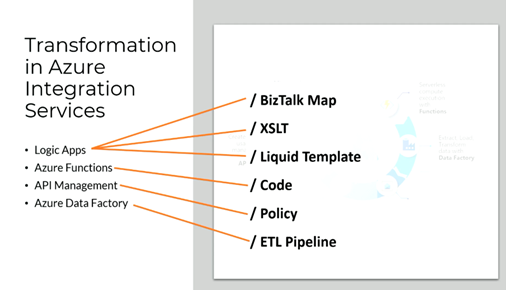
This would be helpful if you are looking to migrate BizTalk Server to the cloud. The notable features of BizTalk Maps include a graphical editor, 80+ functoids, self-documenting & more. He mentioned that BizTalk Maps are intuitive for creating transformations as you can also host them in Azure using Logic Apps.
Dan then detailed the steps to migrate those Maps to Logic Apps Standard or Consumption. One thing to note here is you cannot have .NET-based functoids in the Standard version

It follows almost a similar method as BizTalk Maps, but here you can try using XSLT 2.0 or 3.0 to solve the problem with unsupported functoids. He showcased a recorded demo to perform transformation using XSLT templates and Logic Apps.
Liquid is a templating language that can display data using placeholder tags. It supports iteration, conditional logic, etc. Also, it works best for JSON, XML and text (e.g., CSV). Liquid templates in Logic Apps support 4 major actions: Transform JSON to JSON, JSON to text, XML to JSON, and XML to text.
Azure Functions supports Liquid templates, XSLT 2.0 / 3.0 and unit test/debugging is easy to perform. So, here he mainly explained how to perform transformation using XSLT, Liquid Template or just plain code along with a live demo.
In this method, transformation can be done using API policies where you can convert XML to JSON, JSON to XML, execute XSLT, find and replace string or the message body. It can be used in different types of scopes and policy sections like Inbound, outbound, and on-error.
It allows transforming data as part of an ETL or ELT flow. Data Factory can perform a variety of transformations, including Aggregate, Conditional Split, Filter, Lookup, Stringify and Flatten. It also supports chaining multiple transformations.
The fourth session of Day 3 was taken over by Toon Vanhoutte, sharing his “Top 10 favorite Azure API Management tips and tricks”. During the session, he kept people interacting with him by conducting a poll to get their responses and stated the right way to respond to the corresponding scenario. He also shared the links to blogs to know about the execution of each tip and trick in detail. The blogs seem to explain the need for it, the method of handling, and the result that could be expected.
Automatic Backups for Azure API Management


Dynamically Expose Open API definitions in Azure API Management
The best contract is to set up your own definition for API’s that you share with the customers, expose your Open API Definition, using the options below for the specification

Send API Inspector Traces to Application Insights
To Troubleshoot the issues in production, Application Insights is a better way. To have a record of every policy being executed, one can configure the verbosity from the Azure resource manager, this will eventually help one to identify the errors made with a policy with ease.


Hide Stack Traces in a smart way in Azure API Management


Emit Custom Metrics from Azure API management

Layered API Design in Azure API Management


Use Azure Policy to Enforce HTTPS in Azure API Management


Protect your Azure API Program with Single Azure AD RBAC Policy

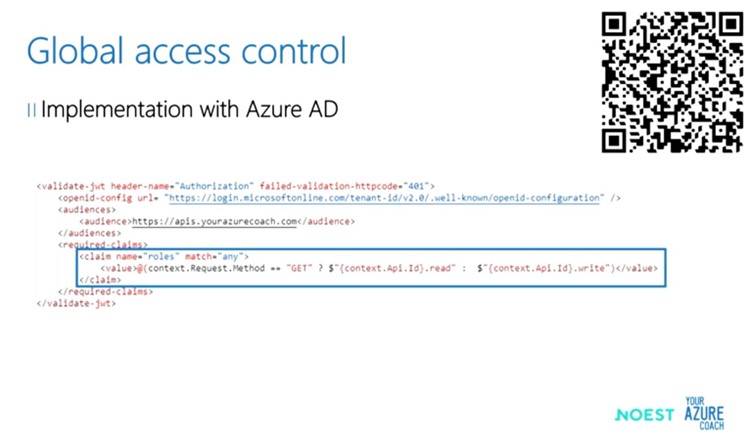
Enforce the Global Policy in Azure API Management


Password-less last mile security with Azure API Management

Thus, the session by Toon Vanhoutte deliberately gave vast information about the things that can be done to keep the API and Environment secure and reliable. He shared his thoughts as a best practice to have a dedicative team write the API Policies and whereas other members can be provided with access to view them and use it as per the requirement.
Michael Stephenson Coach and Consultant of Connected Systems Consulting Limited who is also a freelancer Cloud guy presented on the topic of Automated Testing of Logic Apps.
With great pleasure, Michael gave an introduction on himself and started briefing about Logic App and its Standards, where he said, Automated testing of logic Apps is more about reducing risks and improving agility.

He over-viewed the approach of Automated testing of Logic App and explained how automation of logic apps took its place in the market with an example.


Test logic Apps when deployed to Azure.
Advantages
Disadvantages
Self-host Logic Apps in Func.exe on the dev machine.
Advantages
Disadvantages
Real-world-like test.

What if it is not triggered by HTTP.

Mocking with the unit test sample.

Running tests in pipeline.

Living Document.

Adding to the scenarios, Stephenson gave a few tips and tricks to be followed while in automation.
Eventually, Michael walked through on what’s good and what needs work when it comes to Automation of Logic Apps and shared a piece of enlightened information which had links to ‘How to get started with Automated Testing of Logic Apps’ which was set as the final point of talk for the session.

Alessandro Moura, integration platform lead from Fisher & Paykel who is a first-time speaker in the Integrate event shared his knowledge on DevOps and a demo with Azure Integration Service on how they have deployed on their organization.
He started the session with the general DevOps like where it can be used and what are the necessary items need to take care of or consider before the development, testing, and monitoring.
Also, he gave a few suggestions on the source control repository followed by the branch strategy that they have used in the development.
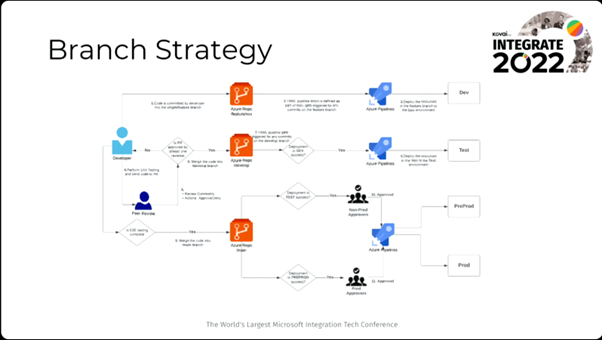
Followed by the strategies, Alessandro also mentioned the Specific solution code that they have used to build like,
He also mentioned the API Management and environment configuration that they have used, since it will take a long time to deploy they are only deploying the policies that were created/changed (he showed during the demo).
He also mentioned the usage of function Apps and Logic Apps for workflow, testing, and monitoring as well.

Then the most awaiting demo was given under the below topics

He ended the session with a few interesting takeaways and best practices like,
Saravana greeted and thanked the attendees for staying till the end of the event.
This time at INTEGRATE 2022 we had –
There were several social media posts from participants across the globe.
Attendees and Remote participants are given access to the online portal where they can view the session recording.
Saravana introduced the Team that worked from India

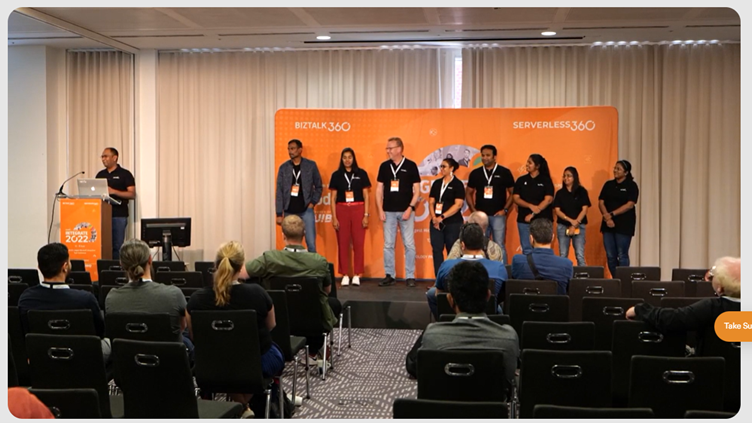

That’s the wrap of the INTEGRATE 2022 Remote.
At this juncture, we would like to extend my sincere thanks to all the attendees, speakers, partners, and sponsors for supporting us in successfully running the 2022 edition of INTEGRATE.
We hope to count on your support in the future as well.
This blogpost was prepared by:
Amritha Modhana Christhini Devaprakash Dharshini Sivaramakrishnan Nithyapraksh Pratiksha